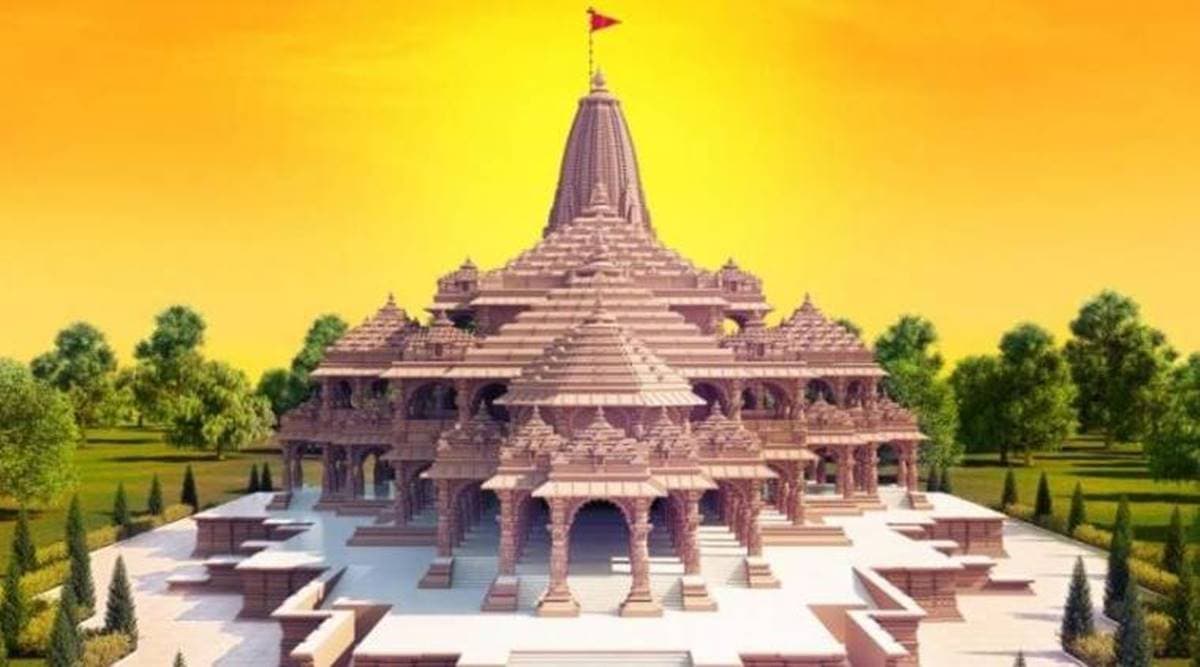 Nripendra Mishra, chairman of the Ram temple construction committee, said the issue of supply of sandstone from Rajasthan has not come up before the panel.
Nripendra Mishra, chairman of the Ram temple construction committee, said the issue of supply of sandstone from Rajasthan has not come up before the panel.The Rajasthan government has decided to seek as a matter of “highest priority”, central clearance under the Forest and Wildlife Acts for denotifying Bansi Paharpur block of Bharatpur’s Band Baretha wildlife sanctuary to allow mining of the unique pink sandstone that is found in the area.
Over 1 lakh cubic feet of Bansi Paharpur sandstone, coveted for its unique pink shade, has already been sourced as the exclusive material for the construction of the Ram temple in Ayodhya where stockpiling began soon after the shilanyas in 1989.
Although on paper no mining was allowed after 2016, illegal operations continued — and the Bansi Paharpur sandstone remained available in the grey market. However, the supply has apparently dried up since the Bharatpur administration seized 25 trucks loaded with illegally mined pink sandstone in Bansi Paharpur on September 7.
Following the raid, functionaries of the Vishwa Hindu Parishad (VHP) in Ayodhya warned against blocking the supply of pink sandstone. “We wanted the Congress government in Rajasthan to understand that building the temple is the nation’s work. A solution has been found every time an obstruction came in its way. We will welcome any move to legalise the Bansi Paharpur mines,” Sharad Sharma, VHP’s regional spokesperson in Ayodhya, told The Indian Express.
In a communication marked “most urgent” on October 23, Rajasthan’s joint secretary (mines) O P Kasera asked the Director, Mines, to apply for denotifying the Bansi Paharpur block on the Union Ministry’s Parivesh portal as a matter of “highest priority”. Kasera declined to comment on what prompted the state government’s move.
Asked if the mines were being legalised to facilitate the supply of pink sandstone to Ayodhya, Bharatpur District Magistrate Nathmal Didel said, “There is nothing in writing on supplying stone for any particular” purpose. “This stone is in high demand all over the country, and the decision has been taken after a joint survey by the revenue, mines and forest departments,” he said.
But the state forest department claims it is yet to weigh in. “We have not offered any view on the matter. The mining department has to determine the ground on which the denotification application is being filed. We will then look into it for forest and wildlife clearances,” said Sreya Guha, principal secretary, forest and environment, Rajasthan.
The groundwork is at the final stage in Bharatpur. “We have conducted a joint survey of the 556 hectares in question with the forest department and are in the process of filing the application for denotification,” P S Meena, superintending mining engineer in charge of Bharatpur circle, told The Indian Express.
While the 199-sq-km Band Baretha wildlife sanctuary was notified in 1985, sandstone mines have been operational in the area since the 1960s. “Illegal mining has been rampant as our pink sandstone fetches more — Rs 500 per cubic feet — than the red sandstone of Dholpur. Be it the elephant statues all over Uttar Pradesh or the Ram temple, this is the stone in demand,” said Dilip Singh Rathore, who claimed he owns the only “legal mine which was forced to shut down in 2016 due to the ban”.
Since the 1990s, an assembly of artisans has been working on pink sandstone blocks sourced from Bansi Paharpur mines in the VHP’s workshop in Karsevakpuram, Ayodhya.
“Between 40% and 45% of carving work for the ground floor is complete. We have already sourced around 1.1 lakh cubic feet of an estimated 3.5-4 lakh cubic feet of sandstone that the temple will require after the expansion in its plan,” said VHP’s Sharma.
“This (Bansi Paharpur) is the king of sandstone. So mixing this with other varieties with red dots and lines is not aesthetically feasible. If there is not enough supply, the only option is to switch to a different stone altogether,” said Ashish Sompura, one of the architects who have designed the temple.
Nripendra Mishra, chairman of the Ram temple construction committee, said the issue of supply of sandstone from Rajasthan has not come up before the panel.